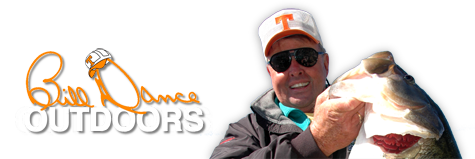Drag: Reel ResistancePosted: October 16th, 2012 by Bill Dance OK, my favorite time to fish is: whenever I can. But if I had to pick a season, it would be fall. Autumn angling just has so much going for it, and one of the best things is that you get bit—a lot! With that in mind, don’t neglect setting your reel’s drag system properly. Be like the Boy Scouts this fall, BE PREPARED! Setting a drag involves the Goldilocks Effect…things have to be “just right.” Too tight or too loose and you are going to lose most bass battles, especially those with big fish. I think a lot of the problems anglers have with drags is that they do not see the system as what it is. Many believe a reel’s drag system to be a brake. This is not the case. A drag is more of a clutch, than a brake. It slips, allowing you to apply more or less pressure to a hooked fish. Trust me, if you use a reel as a “brake,” more fish are going to tear loose before ever seeing the side of a bass boat. The best way to about setting your drag is to do so with a scale. I like to set my drags at 20 percent of the line break strength. For example if you have 15-pound test on the reel, then the drag should be set 2 ½ to 3 pounds of drag (20 percent of the line test). Having your reel full of line is also a plus when it comes to drag settings. Once a drag is set with a full spool of line, I never touch it. With less line on a reel, the more you have to back off on the drag. In other words the required drag settings are going to change. The best thing to do, for consistency, is always keep your reel’s spool filled with line and drag set accordingly. Of course, there is a wide range of fishing lines out there today. And this would seemingly make setting drags according to line size and test very interesting. This brings to mind the question: “Is there a drag system out there that can handle such a diversity of line types and sizes?” My friend Bob Bagby, Director of Marketing at Quantum/Zebco says today’s drag systems are designed to handle and adjust to a variety of line types and sizes. For example, braided lines might need a higher drag setting, while fishing with lighter lines might require you to have a smoother, lighter setting. Companies like Quantum/Zebco have created drag systems that manage a variety of line types, largely through the use of carbon and ceramic materials. But again, when setting your drag, try to use a scale to pinpoint the precision of drag slippage and always keep your spools filled as recommended by the reel’s manufacturer. Nope, you are not going to win all your bass battles. But believe me, taking the time to follow a few simple tips when it comes to setting your drag will help you win more than you lose. Catch one for me,
|
Upload your trophy bass photo (or any other fish) to BillDanceOutdoors.com! Or, post comments about other photos submitted by Bill Dance fans.
Bill Dance is one of the most recognizable names and brands in fishing and outdoor gear. Please browse through our selection of superior products that proudly carry the Bill Dance name.
|





